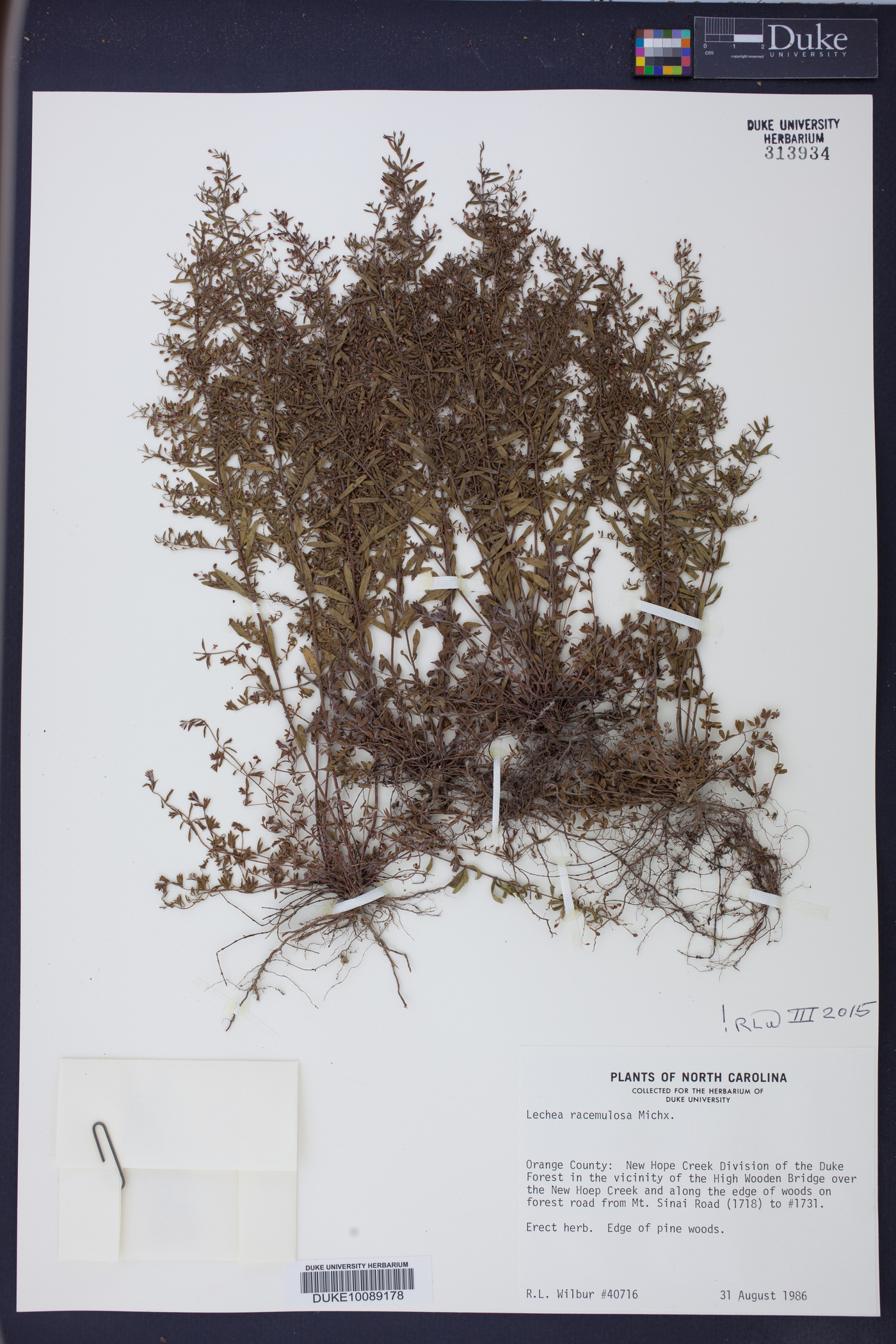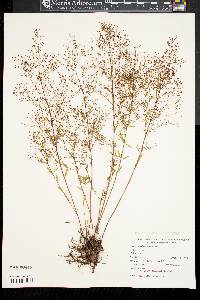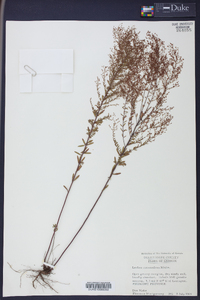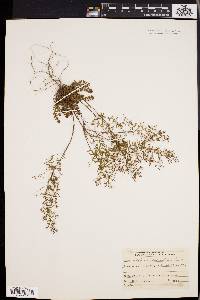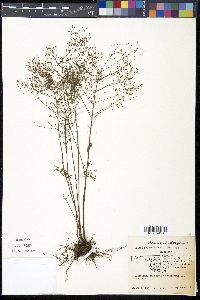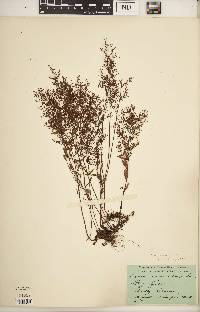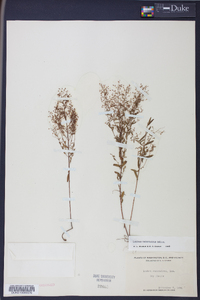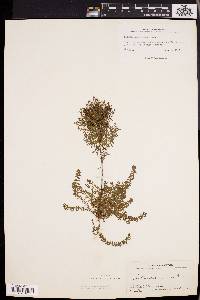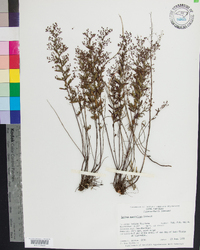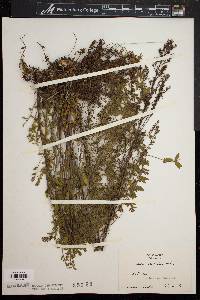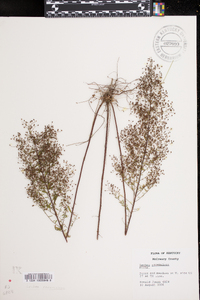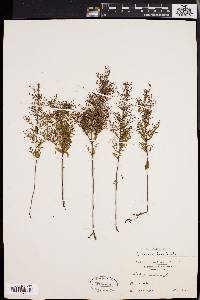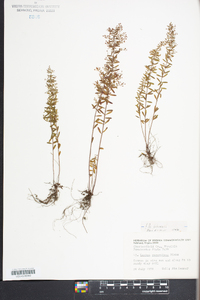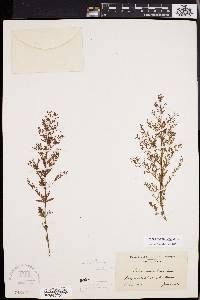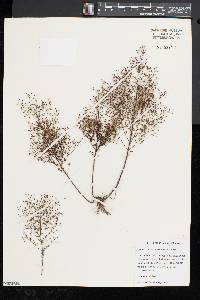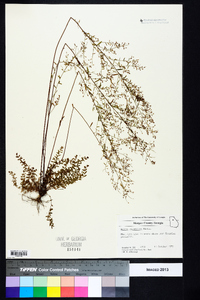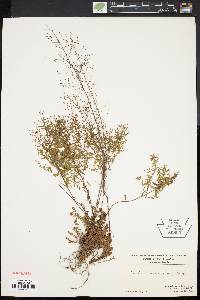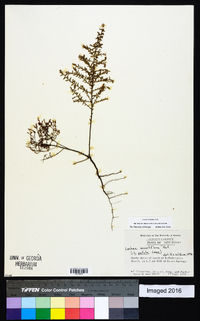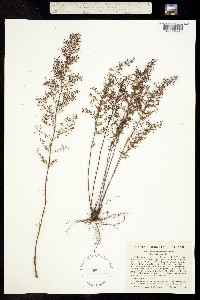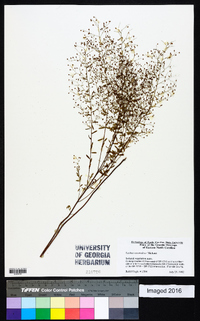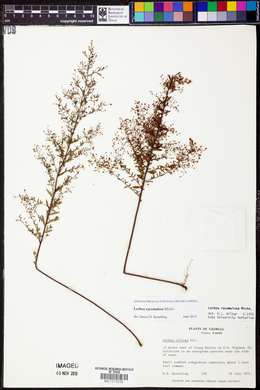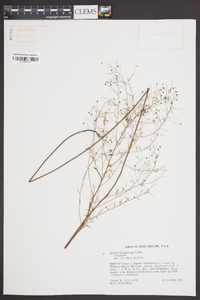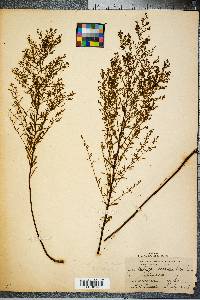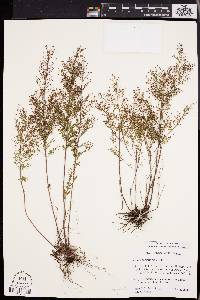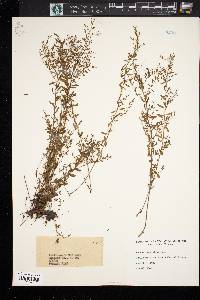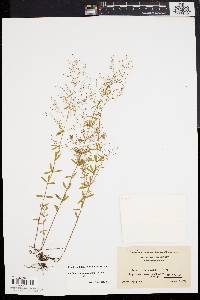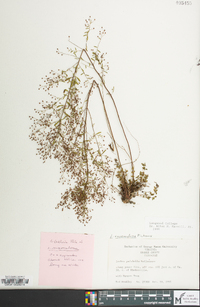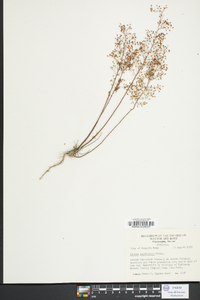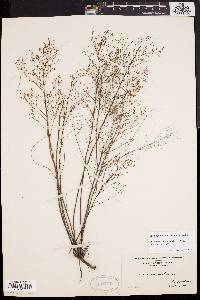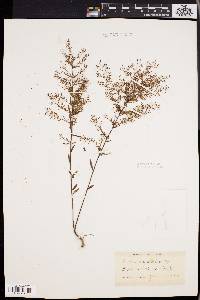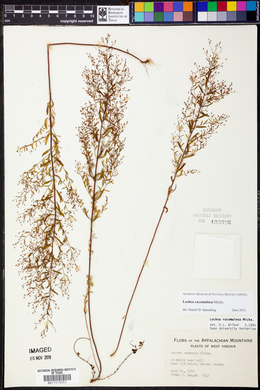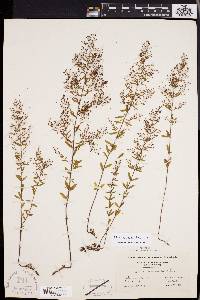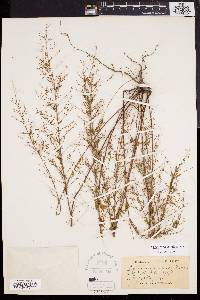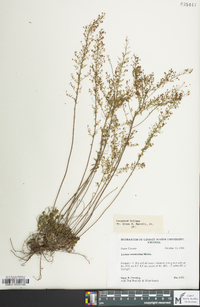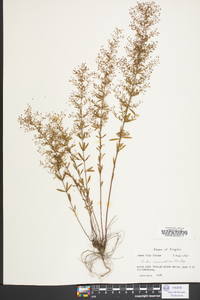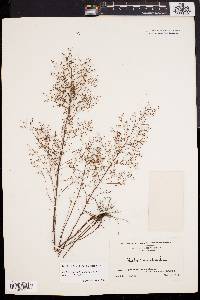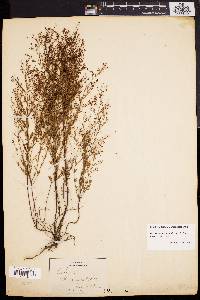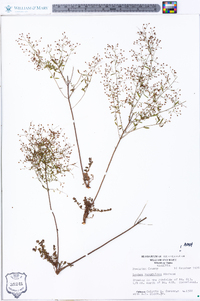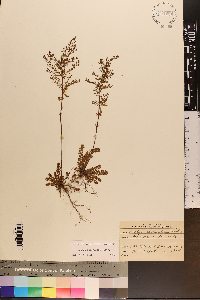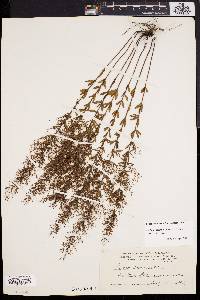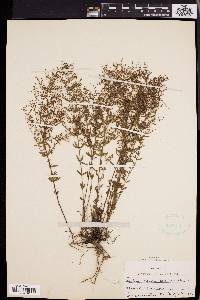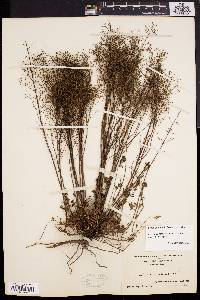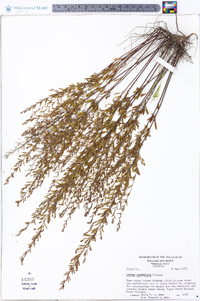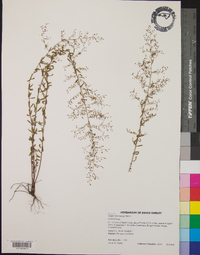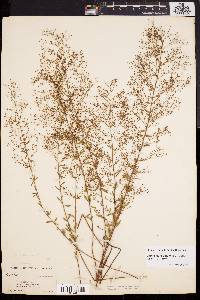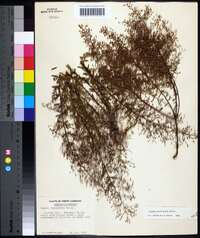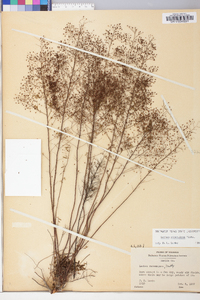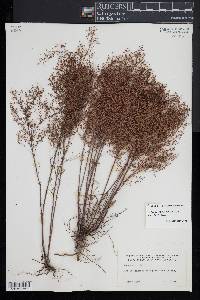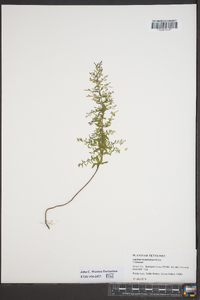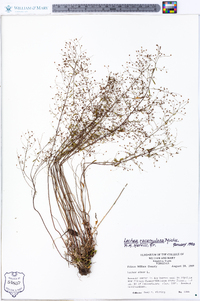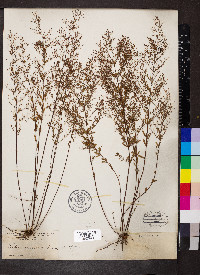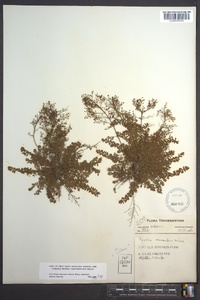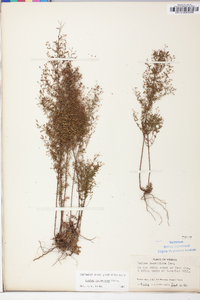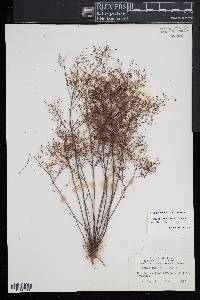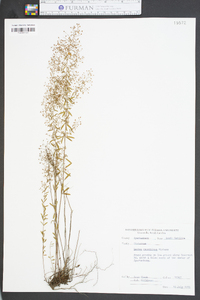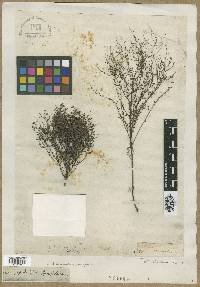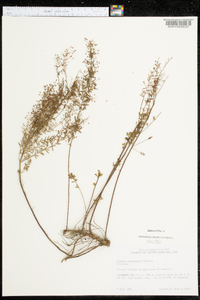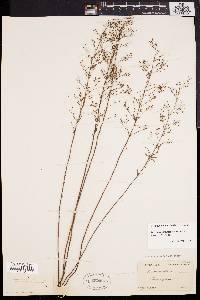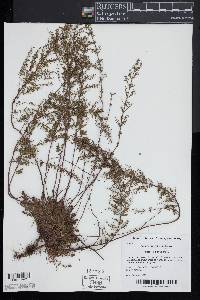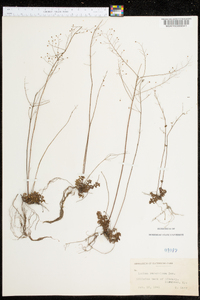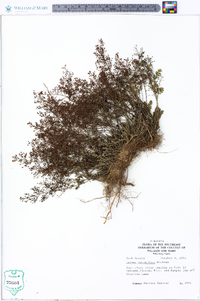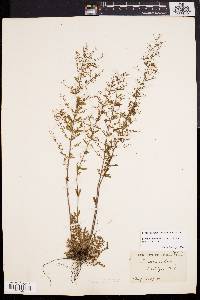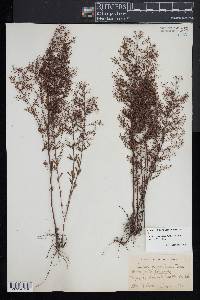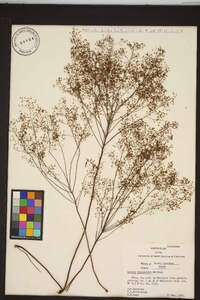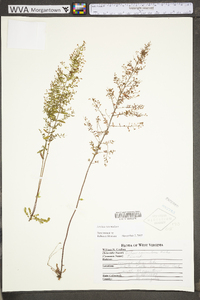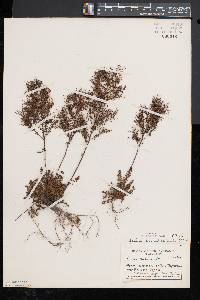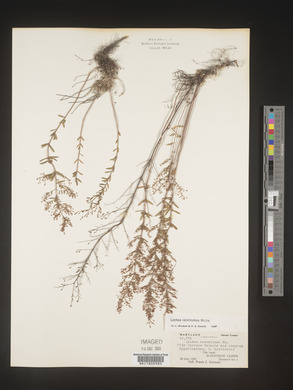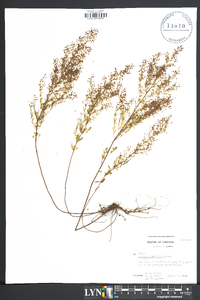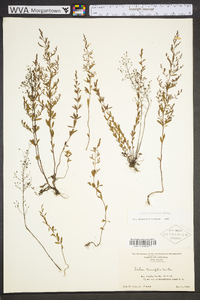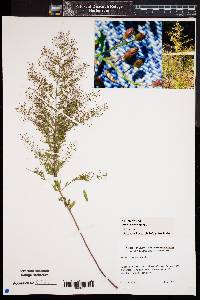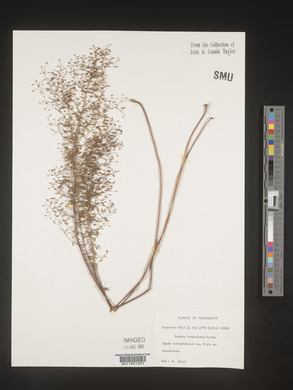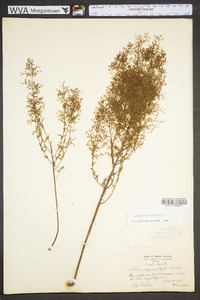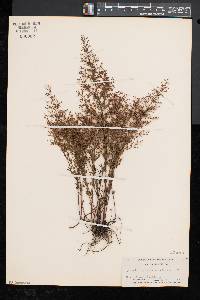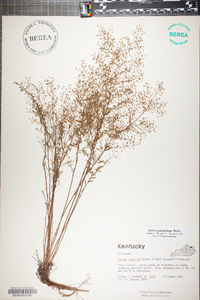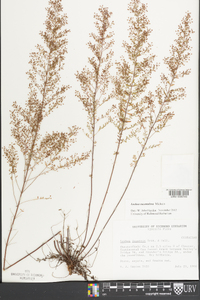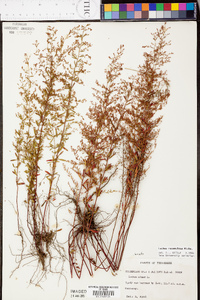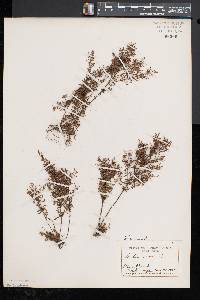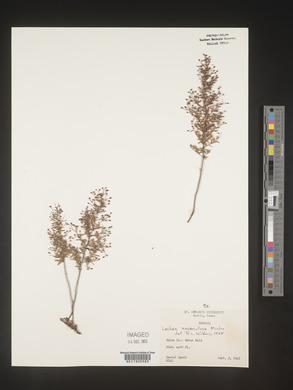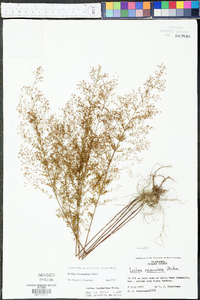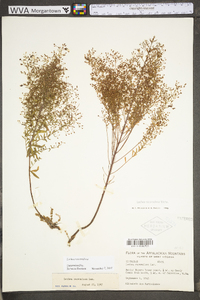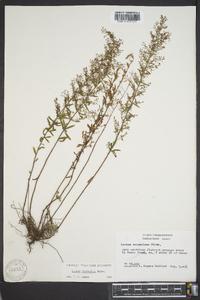Lechea racemulosa
|
|
|
|
Family: Cistaceae
Oblong-Fruit Pinweed
|
Perennial herb 10 - 45 cm tall Stem: one to few, erect, unbranched below inflorescence, thinly covered with appressed hairs. Late in the season producing somewhat ascending, basal shoots up to 8 cm long, with numerous, crowded leaves. Leaves: alternate or some whorled, stalkless, bright green, five to eight times longer than wide, narrowly lance-shaped (almost linear in inflorescence), non-toothed, one-nerved, mostly hairless except for soft hairs on underside along midvein and edges. The leaves on the later produced basal shoots differ from the upright stem leaves by being much more crowded, often whorled, more oblong or elliptic, and not as long in relation to their width (4 - 6 mm long, 1.5 - 2.5 mm wide). Inflorescence: terminal, relatively long (about half length of entire plant), somewhat delicate, finely leafy, with numerous ascending branches ending in loose spike-like clusters of stalked, tiny (under 3 mm tall), reddish, non-showy, radially symmetric flowers. Sepals: five, but in two series, with outer two linear and much narrower than the elliptic to spoon-shaped inner three, though all somewhat appressed-hairy. While all five sepals may be of similar length (1.8 - 2 mm), it is not uncommon for the outer two to be shorter, still the sepals are always longer than the petals. Petals: three, mostly concealed by sepals, reddish, small, and rarely expanding. Stamens: typically five to twenty, with short anthers on relatively long, slender filaments. Pistil: with one, single-chambered, superior ovary; no style; but three, feather-like stigmas. Fruit: single-chambered, three-valved, twice as tall as wide (1.7 - 1.9 mm tall, 1 - 1.2 mm wide), ellipsoid to narrowly egg-shaped capsules which are almost enclosed by the persistent inner sepals, and sit atop at least 2 mm long stalks. In fruit, the basal 0.5 mm of the sepals become hardened, shiny, and yellowish while the upper portions remain softer. Seeds: one to three per capsule, dark brown, 1 - 1.3 mm long, and released when top of capsule opens down the three lengthwise valves. Similar species: Lechea racemulosa is somewhat similar to L. mucronata except that species has spreading hairs on the stems, the inner sepals have a raised lengthwise ridge (keel) which may have some hairs along it, but otherwise the inner sepals are hairless. Two other fairly similar species, L. minor and L. tenuifolia, typically have their outer sepals obviously longer than the inner ones, the inner sepals are the same texture in flower and fruit, and the fruit are usually on stalks less than 2 mm long. The remaining Lechea species in the Chicago Region have more spherical capsules that are notably less than twice as tall as wide. Flowering: August to October Habitat and ecology: Incredibly rare, not reported in over seventy years, but supposedly found in dry sandy soil along the shore of Lake Michigan in Indiana, though no voucher specimens have been found. Occurence in the Chicago region: native Notes: It is questionable whether this species should be included in the Chicago Region flora since we have been unable to locate any specimens to verify the original statement of its existence by Hodgdon (1938). There were no voucher specimens cited in that work, which is of concern since that population is quite outside of the range of the species. In fact, L. racemulosa is already at the most northwestern edge of its range in southern Indiana. However, it seems all later works (Deam 1940, Wilbur and Daoud 1961, Swink and Wilhelm 1994) have taken the information by Hodgdon as being correct. It would be more convincing if specimens could be found in a herbarium that could be properly reexamined to verify the species identity. Etymology: Lechea is named after John Leche (1704 - 1764), a Swedish botanist. Racemulosa is translated from Latin as "with small racemes", in reference to the raceme-like arrangement of the flowers. Author: The Field Museum Stems 2-4 dm, thinly appressed-hairy, lvs usually glabrous above, pilose on the margins and on the midrib beneath, those of the basal shoots oblong or elliptic, 4-6 mm, a third as wide, often whorled, the cauline ones narrowly lanceolate or oblanceolate, 5-8 times as long as wide; panicle usually occupying half the plant, with numerous ascending branches, the fls in short, racemiform clusters on pedicels 1-3 (avg 2 or more) mm at maturity; outer sep from distinctly shorter than to about as long as the inner; fruiting cal with a differentiated basal part, as indicated in the key; seeds 1-3. Dry soil; se. N.Y. to O. and s. Ind., s. to Ga. and Ala.; also nw. Ind. and s. Mo. Gleason, Henry A. & Cronquist, Arthur J. 1991. Manual of vascular plants of northeastern United States and adjacent Canada. lxxv + 910 pp. ©The New York Botanical Garden. All rights reserved. Used by permission. From Flora of Indiana (1940) by Charles C. Deam In clay soil in black and white oak woods in the knobstone area and in dry, sandy soil in the lake area. (See Rhodora 40: 100. 1938.) Very local. …… Indiana Coefficient of Conservatism: C = 8 Wetland Indicator Status: N/A |

